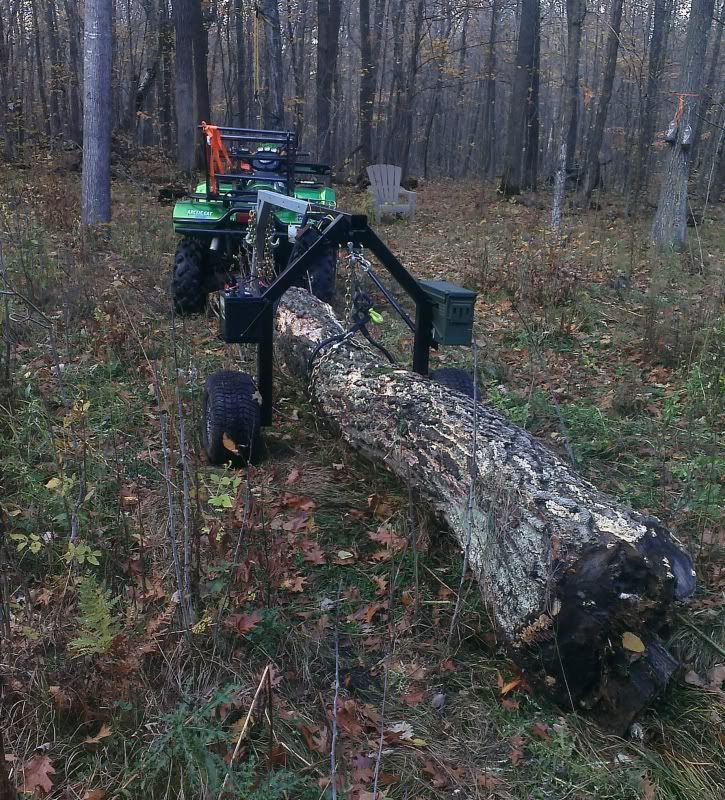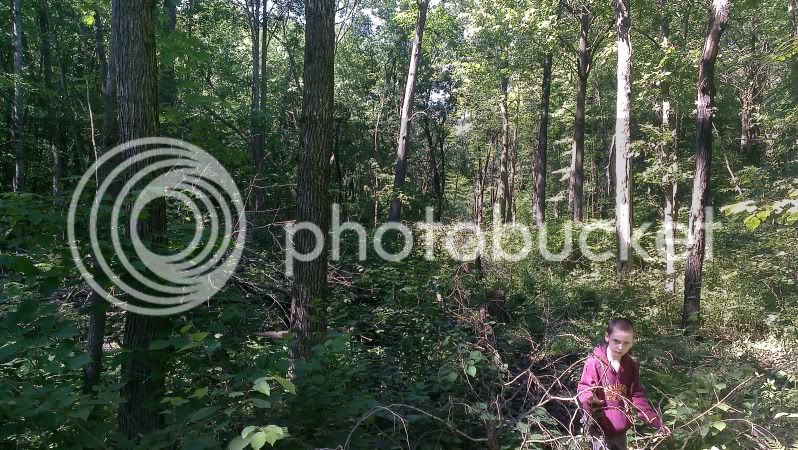Jim Timber
1/4 bubble off
I've got 84 acres that needs thinning. I'm looking at roughly 5 cords per acre of 10" or less oak and maple, and moving some larger diameter basswood (20-24" DBH) and aspen (max 16" DBH).
I have moved some bigger trees with my atv and log arch, but understand that this is way slow for a commercial venture. It is possible for me to get all the trees I need gone to my landing with this method.
I'm wondering if I used a bigger skidsteer (like a Cat 262 or 272) with a grapple to stage wood, and then hauled it on a mid sized trailer to the landing and used skidsteer to stack it - could I pull this off?
I have enough room to get a skidsteer around in the woods, but I don't want to make trails big enough for a traditional skidder or fellerbuncher. I also want to keep the job in-house. Time isn't the biggest factor either. If it takes 6 months, that's ok by me. I have experience felling trees in this stand, so I'm not going in blind. I don't have experience doing what I'm doing using real machinery. I've cleared a couple acres already without any mechanized help, and those were done over a few days each. Not having to manhandle the wood should substantially speed things up. I can clear cut an acre in a few hours, which sounds in-line with what I've seen guys here post.
Total estimated volume to be removed is 400 cords (not all at once - this thinning could take 4-5 years depending on how much time I devote to it), but I haven't done the basal calculations on-site yet. Some areas will be clear cut too, so there will be bigger wood, but not hundreds of cords of it. I plan to stage things in saw logs and cull/pulp, then have timber buyers come in and bid when it's on the ground. Cull will either be cut for firewood (processed later) or sold to a pulp mill to generate cash flow.
I'm not looking to get rich, but I would like to keep the profit from the wood (rather than hiring a pro). I'm not afraid of long hours or hard work. A/C cab is a must - I'll plug away all summer long if that's what it takes.
I have moved some bigger trees with my atv and log arch, but understand that this is way slow for a commercial venture. It is possible for me to get all the trees I need gone to my landing with this method.
I'm wondering if I used a bigger skidsteer (like a Cat 262 or 272) with a grapple to stage wood, and then hauled it on a mid sized trailer to the landing and used skidsteer to stack it - could I pull this off?
I have enough room to get a skidsteer around in the woods, but I don't want to make trails big enough for a traditional skidder or fellerbuncher. I also want to keep the job in-house. Time isn't the biggest factor either. If it takes 6 months, that's ok by me. I have experience felling trees in this stand, so I'm not going in blind. I don't have experience doing what I'm doing using real machinery. I've cleared a couple acres already without any mechanized help, and those were done over a few days each. Not having to manhandle the wood should substantially speed things up. I can clear cut an acre in a few hours, which sounds in-line with what I've seen guys here post.
Total estimated volume to be removed is 400 cords (not all at once - this thinning could take 4-5 years depending on how much time I devote to it), but I haven't done the basal calculations on-site yet. Some areas will be clear cut too, so there will be bigger wood, but not hundreds of cords of it. I plan to stage things in saw logs and cull/pulp, then have timber buyers come in and bid when it's on the ground. Cull will either be cut for firewood (processed later) or sold to a pulp mill to generate cash flow.
I'm not looking to get rich, but I would like to keep the profit from the wood (rather than hiring a pro). I'm not afraid of long hours or hard work. A/C cab is a must - I'll plug away all summer long if that's what it takes.






